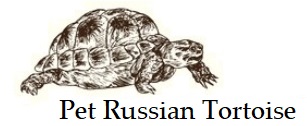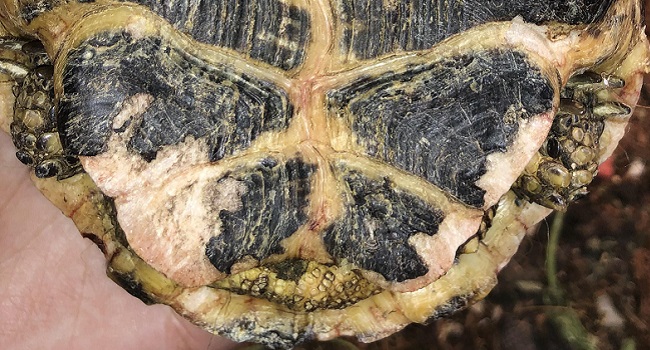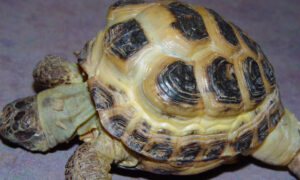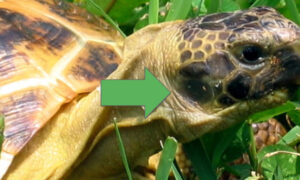Shell rot is more common in aquatic turtles than Russian tortoises. However the cause, treatment and prevention of shell rot in tortoises is similar to that in turtles.
Causes of Tortoise Shell Rot
Essentially, shell rot is an infection of the shell that can occur in the plastron (bottom) or carapace (top).
If we were talking about aquatic turtles, the most common cause is nasty water. But since Russian tortoises do not spend the bulk of their day in water, the cause is a little different. The most common causes of Russian tortoises shell rot include damage to the shell or improper habitat conditions.
Shell Damage
Like most animals, infections can be caused by injury. If you have multiple Russian tortoises in one enclosure or habitat, they can fight causing shell cracks. Sharp items in the enclosure or every day accidents can also cause shell damage. If you don’t catch the injuries and keep them clean, they can become infected, which can lead to shell rot.
Improper Habitat Conditions
If the humidity and temperature are not maintained, over a long period of time, the tortoise can develop shell rot. In some cases, the shell can actually crack, causing an infection and in turn shell rot if the infection isn’t treated.
Russian tortoises need heat. The hot side of the enclosure should have a basking area between 95-100°F, whereas the ambient temperature should be average in the mid- to low-70’s°F. The tortoise should be able to get away from the heat as well as have space to warm up.
As for the humidity for a Russian tortoise, it should be between 30-50%. If you’re maintaining a high humidity for extended lengths of time, you’re risking mold and fungal growth inside the enclosure and potentially on the tortoise. Plus, if the humidity is too high, the shell can get soft and the edges of the scutes can peal up, allowing bacteria to get underneath them. If the humidity is too low, the shell can dry out and crack, allowing bacteria to get in the shell.
Does My Russian Tortoise Have Shell Rot?
Sometimes it isn’t super clear if your tortoise has shell rot or just damage to the shell.
- White patches on the scutes or in-between the scutes
- Cracks in the shell with a white look to them
- Places where the shell doesn’t look even
- Soft shell
- Scutes may fall off or appear to be peeling
- Smelly discharge coming from infected parts on the shell (severe cases)
- Pitting in the shell, in some cases you may be able to see the bone underneath (severe, very progressed shell rot)
How to Treat Shell Rot in Tortoises
If the shell rot is mild, you can likely treat at home with a good prognosis.
- Determine the cause and correct it.
- If the tortoise is housed with other tortoises, separate him because 1) shell rot is contagious and 2) you want to ensure that you can maintain a dry environment until healed.
- Clean the shell with warm water and a soft bristle toothbrush.
- Use a chlorohexidine or povidone-iodine solution to clean the shell. Do not use hydrogen peroxide or rubbing alcohol, as this can actually slow the healing process, as well as damage healthy cells.
- Apply a silver sulfadiazine cream, Neosporin, or other antibiotic cream.
One to two times a day, you will want to clean the shell and apply the antibiotic cream. It may take 5 to 7 days for the shell rot to clear up. However, for more severe shell rot or for cases that just won’t seem to heal with the at-home shell rot treatment, it’s important to consult a tortoise veterinarian.
Shell rot can progress into Septicemic Cutaneous Ulcerative Disease (SCUD), which is very serious. The bacteria on the shell can get into the bloodstream, which can become fatal.
Prevent Shell Rot in Tortoises
In order to prevent shell rot in your Russian tortoise, you want to eliminate the potential causes.
- Remove sharp objects or objects you may notice your tortoise climbing on, falling on, etc.
- Keep a close eye on each tortoise for signs of bullying and fighting, if you’re housing multiple tortoises in one enclosure.
- Keep the habitat clean, removing uneaten food, poop and other debris on a regular basis.
- Monitor the temperature and humidity closely.





